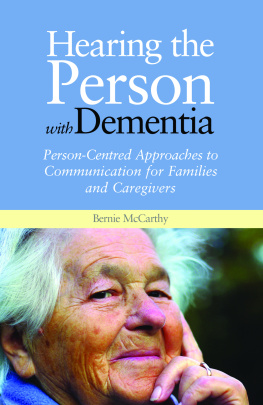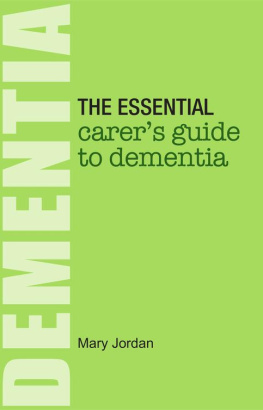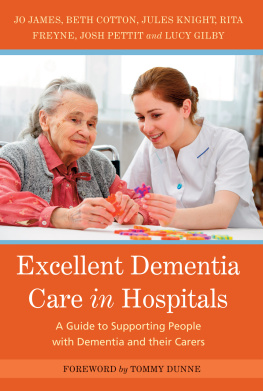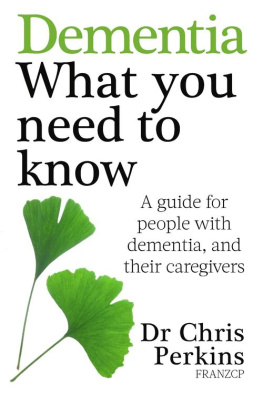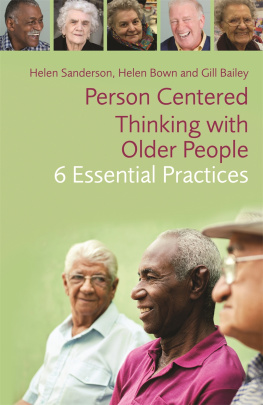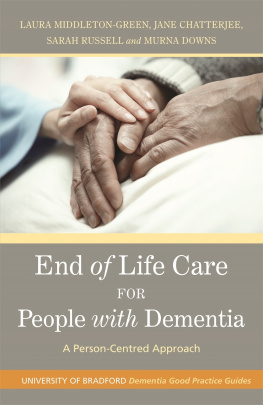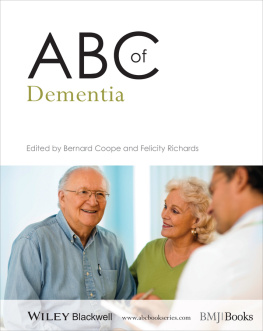Foreword
As a person living with dementia, I cant stress enough the importance of life stories and involving the person with dementia in creating their own life story. After all, the best perspective for understanding behaviour is from the internal reference of the individual themselves.
Every day we lose another piece of our life that will be gone forever unless our family, friends and carers are able to reinforce those memories by going through our life story whether it is a book, photo album or memory box with us over and over again. Without this, people will never know the person behind the dementia. In a care home or hospital we would just be a resident or patient with Dementia instead of a Person with dementia.
They say that knowledge is power, so what better way to have the knowledge to be able to communicate with a person with dementia than to find out what was important to them in terms of their memories, experiences, life events, values and beliefs.
Its vital that people know about what type of food I like, whether Im a vegan/vegetarian, what my religious beliefs are, did I like pets, did I play sports, what school I went to and my employment history. The life story should contain such details as the name I liked to be called by, whether I was married, names of children and grandchildren, parents and friends, as well as my employment experiences and hobbies.
We can take away a lot of stress for people who will be caring for us by detailing our wishes regarding health and financial matters, so why not detail our life story to enable people to have empathy with us.
Care homes would benefit from life stories as they allow staff to enter into the world of the person with dementia. They can go through the book each day with the person and learn about their life, their likes and dislikes. They can help add to the book because it is an ongoing work in process.
Its a great experience for a person with dementia to sit with someone over time to make a personal record of important experiences, people, places and events in their life and provide a way of communicating with them (and their family carers) about their life.
I personally hope that my own life story will give people an insight into the person I was and the person that I now am. But I urge my peers and everyone else to start their own life story today because you never know what the future will bring.
Tommy Dunne
As Tommys wife and now his carer I do worry that I may not always be there to look after him, but through having his life story book I know that people will be able to get to know him and see all that he has achieved.
A life story book epitomises a persons life and can help achieve person-centred and relationship-centred care tailored to meet individual needs. It assists care-planning and helps ensure that the person receives the best possible type of care for their wellbeing. As life stories draw on residual long-term memory, they can provide a medium for communication that promotes self-esteem and wellbeing vital to help prevent isolation.
Having a life story book is a great way of communicating, because if you know about the person you will be more relaxed and that is something that the person will pick up on. Having the book helps to make the person feel proud, valued and appreciated.
Sometimes a person with dementia does not recognise their spouse, children or friends, because in their memory that person is living at an earlier time and should look much younger. Using photos of an earlier time will often help their recognition of family and friends.
A life story book can be a great distraction, and distraction is what all good carers must master to help the person maintain their happiness. It also safeguards personal identity and can increase carers understanding of confused or agitated behaviour.
The book can help care home staff to appreciate the person with dementia in the context of their whole life. It should help them understand the person better and change negative views and assumptions about the person.
The tools in this book will help you make a great life story.
Joyce Dunne
Introduction
Ruth Eley and Polly Kaiser
Ken Holts story
Ken Holt was a great connector, communicator and organiser. His vast experience in local politics and community groups meant he had good relationships with people, while not being afraid to speak his mind. He met his wife Alice during the war and they married in 1946. They shared many interests including a great love of motorcycling and were involved in setting up and running the North West and then the national moto cross association.
Ken had always been an activist, so when his wife Alice received her diagnosis of dementia he threw himself into being active in that world. He became chair of the local Alzheimers Society, the Oldham carers forum and various strategy groups, including Oldham Councils health overview and scrutiny committee.
When Alice eventually had to go to into a care home, Ken, who knew her so well, was able to write Alices life story for the staff. He knew what was important for staff to know. He knew of her war time fears when she would often stay dressed at night in case she had to make a quick dash to the air raid shelter; some nights she would stay dressed come what may. Ken was able to let the staff know this as part of her life story.
Of course, the staff realised, this is why Alice needs to stay dressed at night. Not knowing the history, the staff might have prescribed unnecessary tranquilisers to calm her down. Instead they could see the world from her point of view no more bedtime agitation when staff brought out her nightdress.
This experience gave Ken Holt an insight: stories can have a therapeutic value for us when they help us understand ourselves, our hopes, our fears and our dreams and, importantly, when we can communicate these to others. He was so convinced of the benefits of this approach that he went on to found the Oldham Life Story Group in 2003. He shared his vison for a national network at a psychology conference in York in 2008. Both the editors of this book worked at the Department of Health around that time and, working with many others, were able to launch the national Life Story Network at a conference in Leeds in February 2010. Thankfully Ken lived to see that vison come to fruition before he died later that year. Many of the contributors in this book were also at the conference and have been part of this work and influenced it. They have been using, advocating and researching life story work for many years and we are delighted and honoured that so many have contributed to gathering this knowledge into one place for the first time. The members of the national Life Story Network have changed over time but the work continues in many ways, particularly with the work they are doing supporting the national network of carers TIDE (Together in Dementia Every Day) something we hope Ken would be proud of.
Why is this book needed now?
Since Charlie Murphys work It Started with a Seashell: Life Story Work and People with Dementia (1994) there has been a growth in the use of life story work that has outpaced its definition, research and evaluation as an intervention (Subramaniam and Woods 2012). As a consequence, there is no consistent definition of life story work; if you ask six people, you are likely to receive six different answers, depending on the purpose and context of the work. The term life story work is used to describe a wide range of activities. At one end of the continuum this can be putting ones life into perspective through therapeutic life review, as described by Butler (1963), or as part of a very structured (Haight 1992) or unstructured (Heliker 1997) life review process. This is done on a one-to-one basis with the person. The other end of the spectrum might be the development of a one-page profile like those developed by Helen Sanderson (Sanderson 2016); this might be put together by a family carer or staff working with the family and not necessarily by the person themselves.


